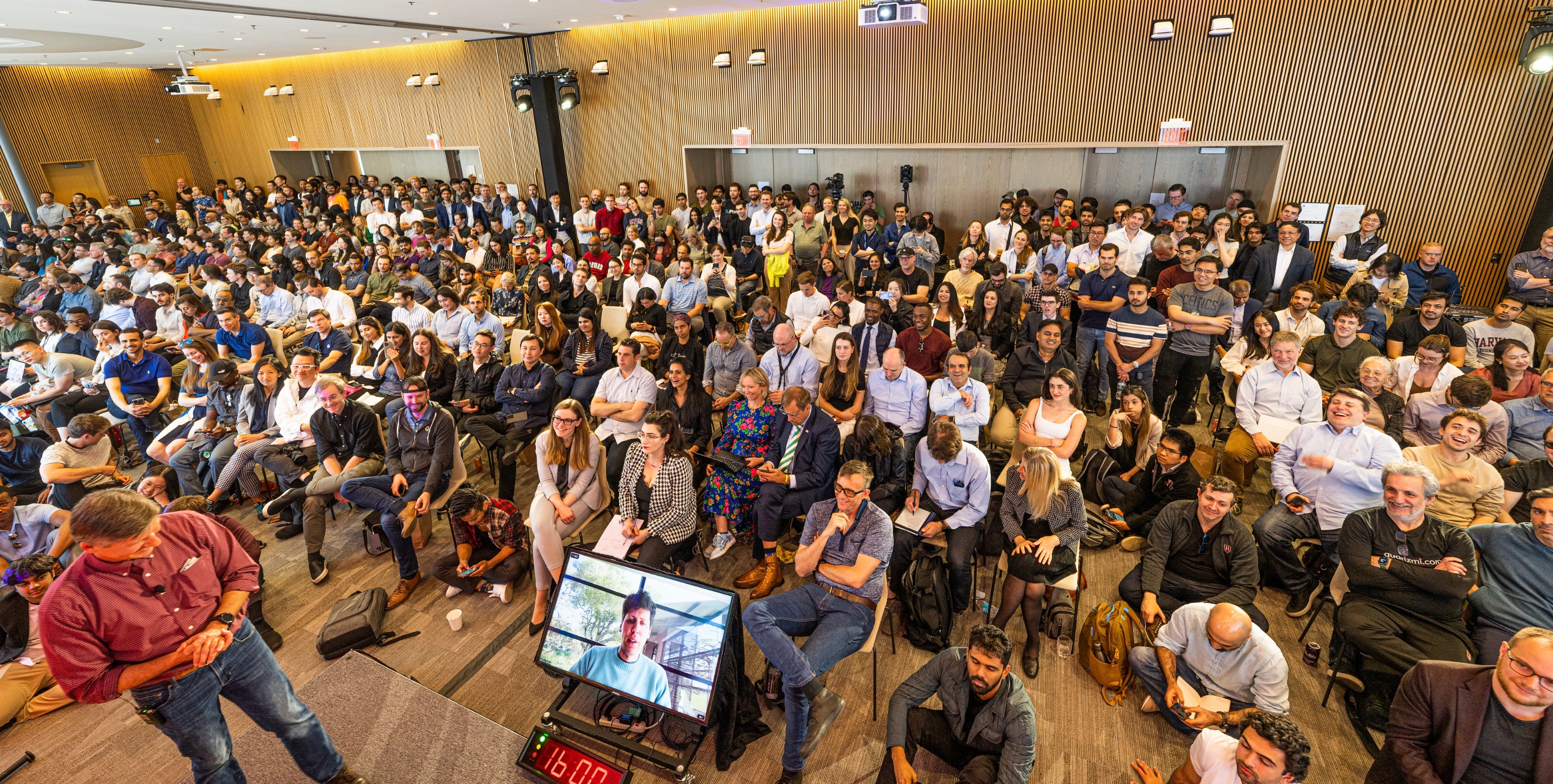
I attended the Imagination in Action – Future of Business with AI (artificial intelligence) event at MIT earlier this week. The topic of the event speaks for itself. it was covering many topics and it is coming at a time we are all experiencing the impact of ChatGPT and related technologies of machine learning, and artificial intelligence because broadly available and widely debated in public. We are all trying to understand what impact this technological breakthrough will have on human intelligence, our lives, and the impact on verticals such as PLM and other enterprise software. It was an unmissable gathering at the MIT Samberg Conference Center in Cambridge, MA.
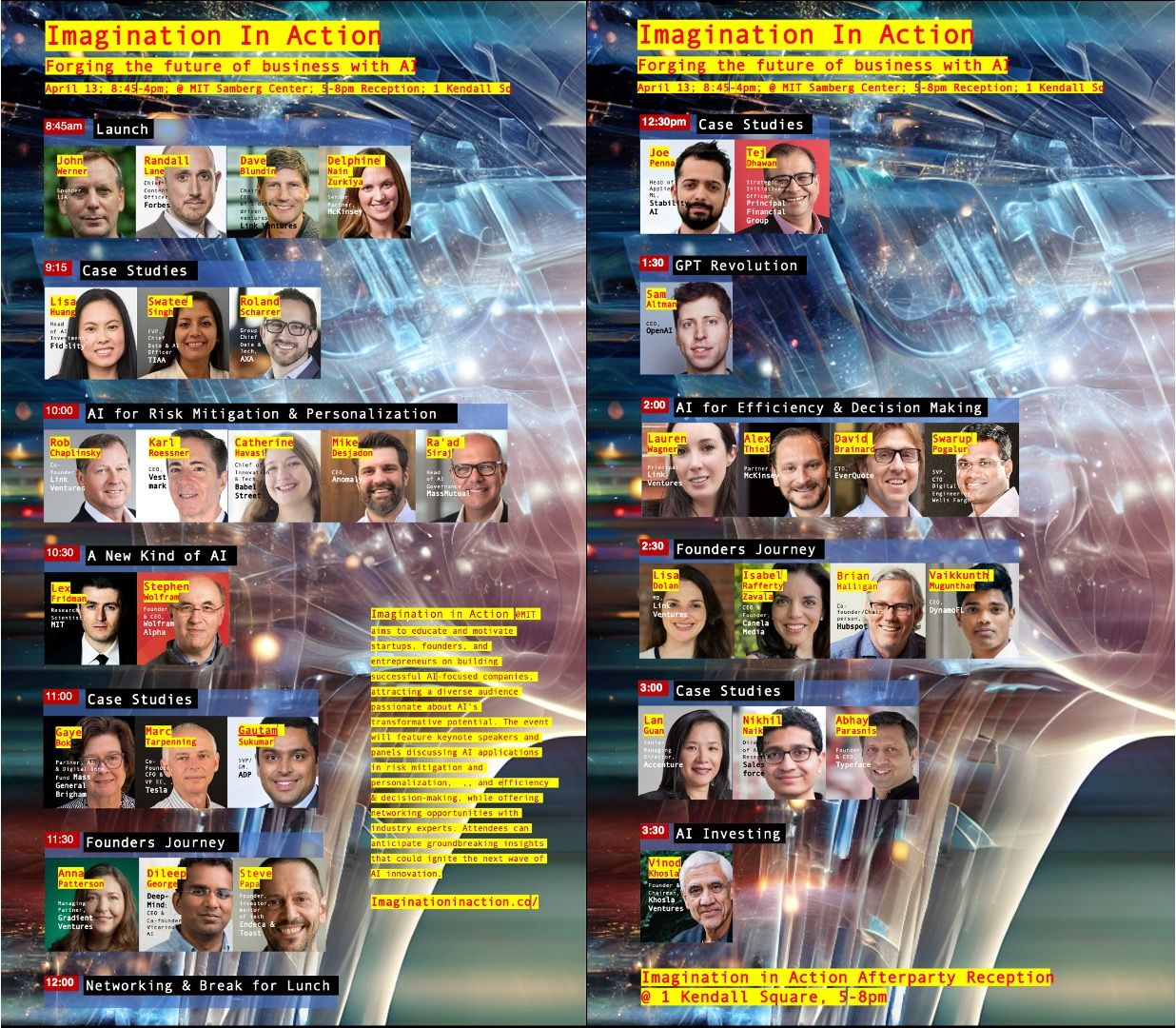
With a truly breathtaking view from the top floor, this is an amazing place to discuss the future of AI and how it will impact our business in the next 5+ years.

The event brought together AI thought leaders and industry game-changers for a day of mind-blowing talks, dynamic panel discussions, and unparalleled networking opportunities. The event also included a reception at One Kendall Square in the evening.

The program was packed with great sessions from different industries and companies representing – consumers, enterprises, fintech, healthcare, finance, engineering, and manufacturing. It was a great opportunity to connect with some of the brightest minds in the AI field. The event was an electrifying experience that left me inspired and enriched with new ideas and perspectives on the potential of AI in engineering and manufacturing software. I wanted to share my notes and thoughts about what I’ve learned and where I can see the potential impact of new AI technologies.
Key Notes From Presentations and Conversations
- The technological impact of AI is mind-blowing. We’re still discovering what this technology can do and how it can change existing processes.
- There is a huge interest from all verticals, enterprises, consumer tech, and investors. Money is clearly available today for AI researchers and innovators.
- Education is an important element of AI development. There is a lot of misunderstanding and misconception about what GAI can or cannot do, how it works, and how it can be used.
- Data is the most important element in the progress of generative AI systems. Without data, all these technologies won’t deliver what is expected.
- R&D productivity seems to be an immediate target. Example of GitHub co-pilot of automatic software development
- Focus on enterprises that are capable to provide data for AI research
- Journalism, education, healthcare, and finance are going to be impacted broadly by AI technologies and innovation. We are going to rethink many decision-making points.
- The questions about IP are real and coming up very quickly. Should we adopt the “Made by AI” definition?
- Society and many ethical questions are coming up very often. Aimov’s robot laws are coming often in association with what AI should be allowed to do. Do we need an “AI constitution” that came up in the evening conversation with Stephe Wolfram?
- AI is not a magic bullet for your startup. You will need to do all normal startup development from customer adoption, growth, etc.
- The speed of innovation will be increased with AI.
- Prompt engineering is real. More people will be needed. Prompt engineers with domain knowledge will be able to outperform people that are not using AI
Thoughts about the Intersection of AI and PLM
- AI will impact business processes managed by PLM systems. It will not replace PLM and will not eliminate existing domains. AI is a technological change and we’ve seen technological impacts in the past. It will improve what we do and how we do things, but we still do our things – making designs, planning production, performing services, etc.
- Contextualizing will become an important element of AI adoption in PLM (and in all other industries too). Without specific industry data, AI won’t work. Microsoft, Open AI, Google, and other platform providers will do horizontal technology work. But vertical knowledge and data are absolutely important.
- Getting access to data is becoming harder. Without specific industry or company data, AI won’t work. Focus on data organization, tracking, and gathering will be important elements of AI adoption.
- Privacy and data are a big deal. Companies are watching their data with an increased level of importance. If you plan AI adoption or developing AI systems, be sure you can get access to data, otherwise, your plans can be questionable.
- Target productivity and decision-making can be a starting point. It is like a “better CAD system” in the past. However, the questions about data and privacy need to be solved.
A few photos to give you a “taste” of the event…
Big thanks to John Werner, Founder, of Imagination in Action. Without his energy and his team, this event will not be happening. Check out the photos from the event. Here are some of my favorite moments.
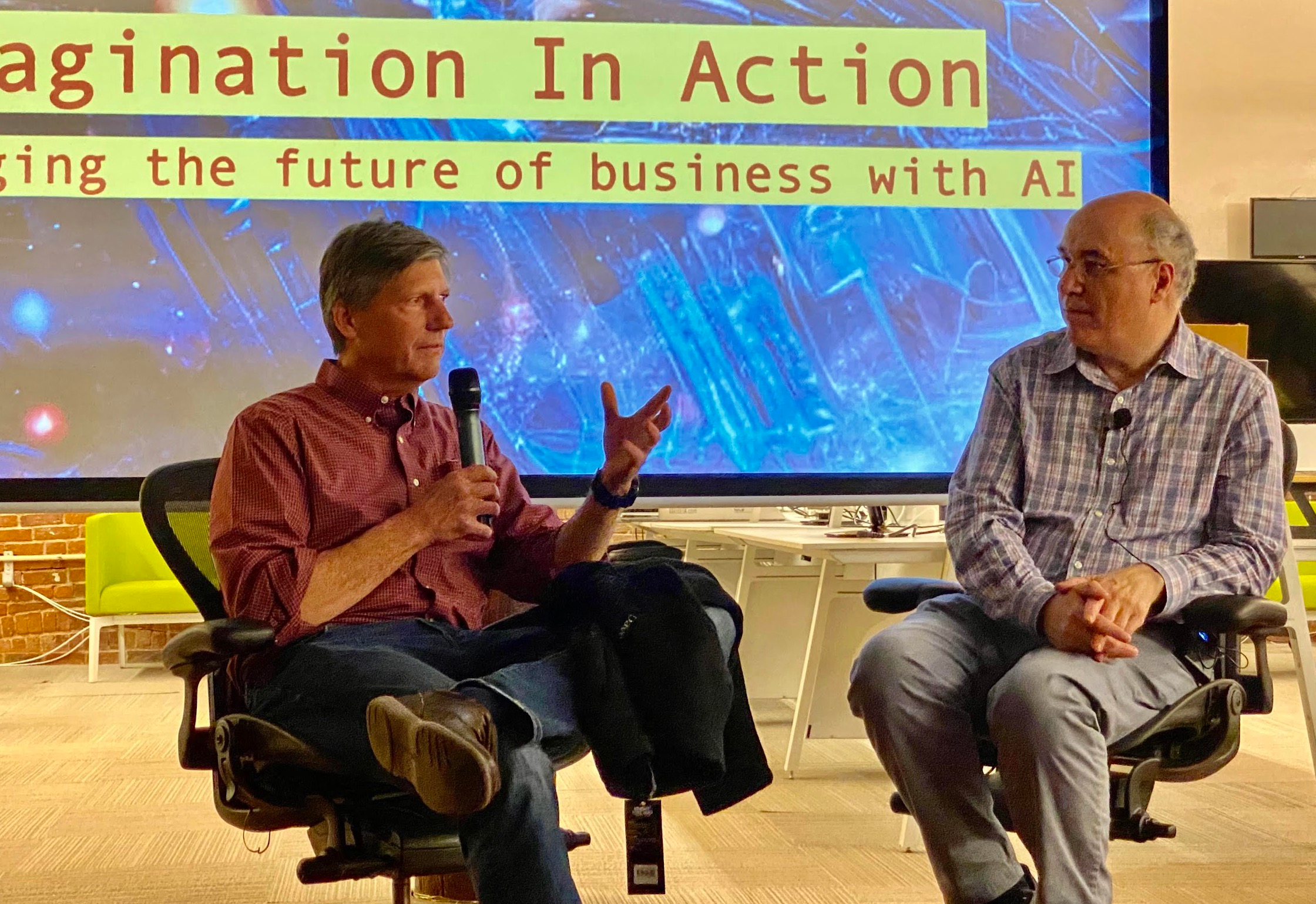
Conversation with Stephen Wolfram and Dave Blundin

Sam Altman of Open AI
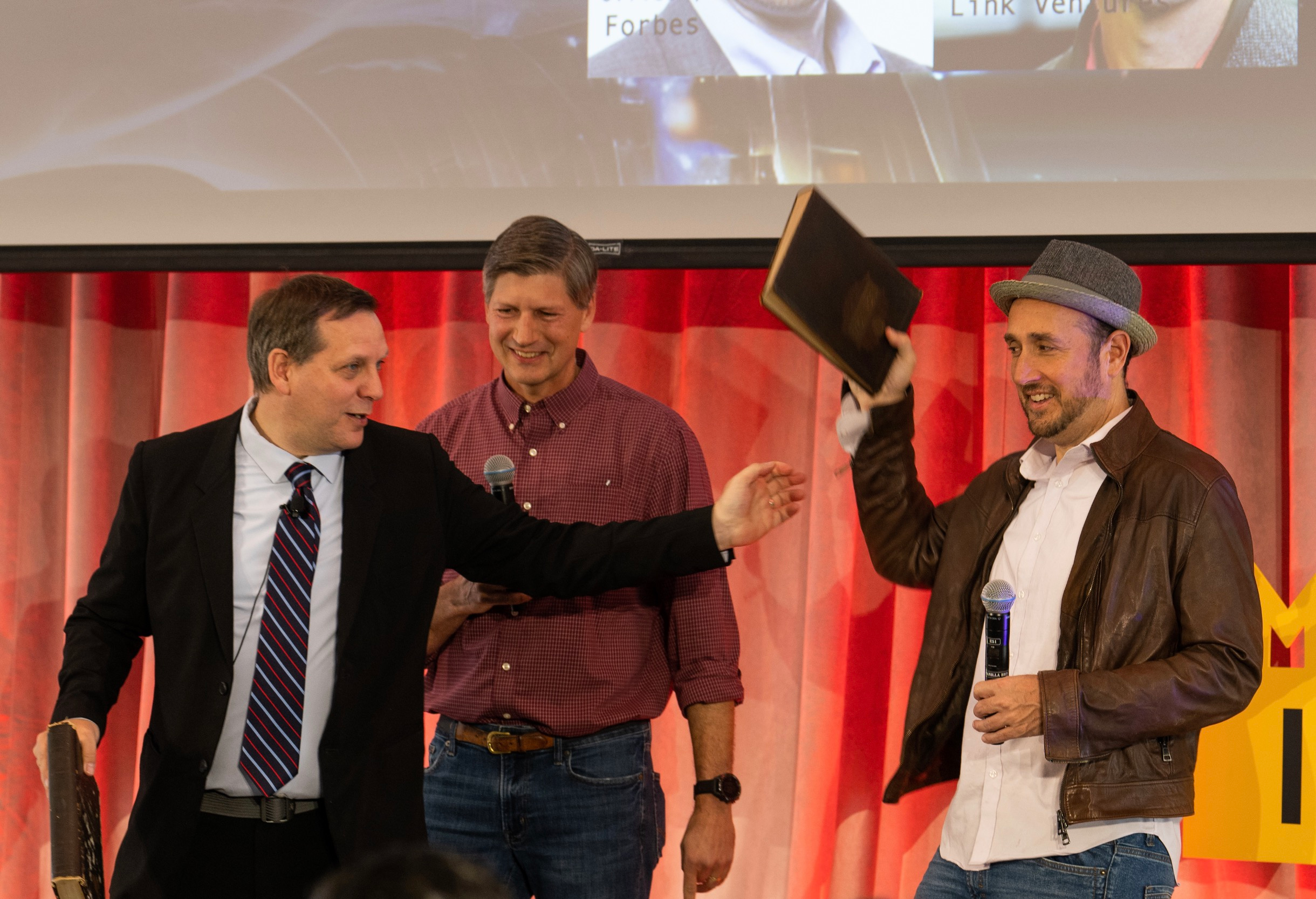
John Werner, Dave Blundin, and Randall Lane
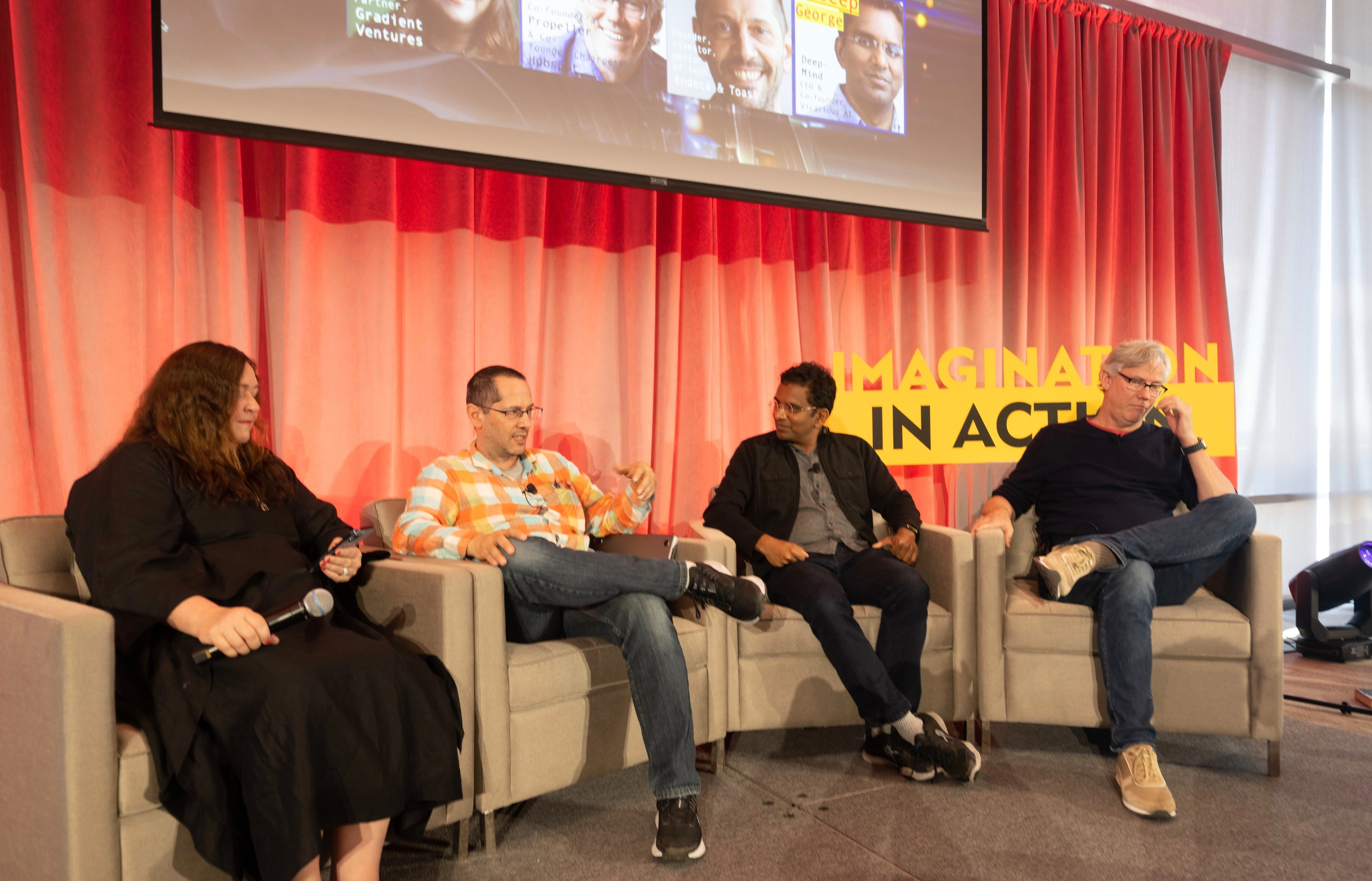
Steve Papa, Brian Halligan, Anna Patterson, and Dileep George
What is my conclusion?
The year 2023 will become a year of AI. However, I like Sam Altman’s thoughts about the gradual improvements that technologies with a long lifecycle. I think it can be applied to the speed of innovation in PLM businesses. Companies are changing slowly and technological adoption was a question in debates in the PLM industry for the entire time I was in the PLM business. Incremental improvements sometimes are not very visible, but the gradual impact is important because it is part of the cycle when existing systems will be replaced. It is a combination of technologies, customer adoption, and value – only introduced together it can make an impact.

Just my thoughts…
Best, Oleg
Disclaimer: I’m co-founder and CEO of OpenBOM developing a digital-thread platform with cloud-native PDM & PLM capabilities to manage product data lifecycle and connect manufacturers, construction companies, and their supply chain networks. My opinion can be unintentionally biased.











